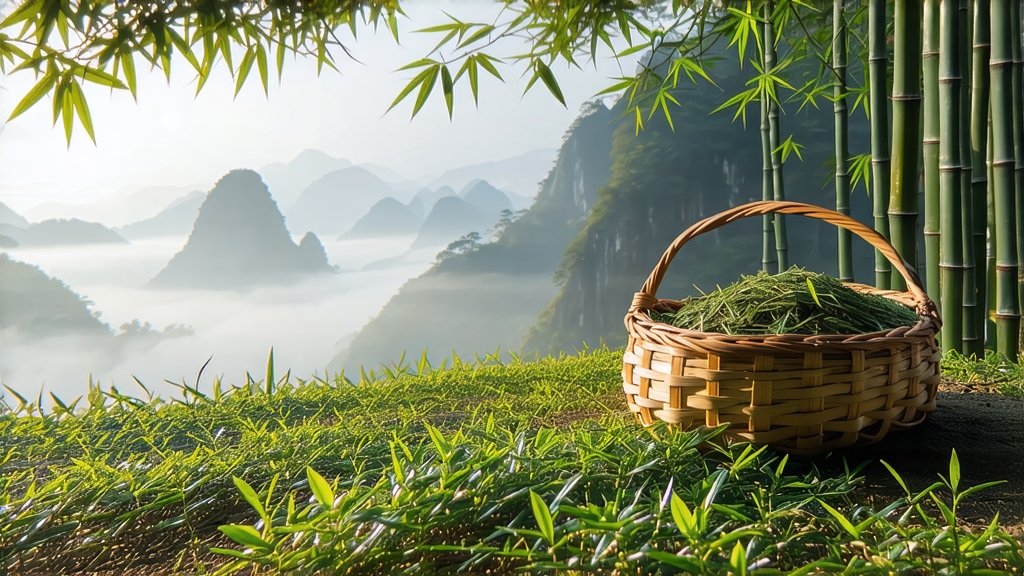
Tucked high above the Sichuan basin, where perpetual cloud veils the Min River gorge, lies Meng Ding Mountain, the cradle of the world’s oldest recorded tea garden. It was here, in the mist-cooled terraces of Ganlu Temple, that Buddhist monks first coaxed the down-covered buds of Camellia sinensis into a luminous yellow liquor more than twelve centuries ago. The tea they created—Meng Ding Huang Ya, literally “Yellow Bud of Meng Peak”—became the only yellow tea ever listed on the Tang dynasty imperial tribute scrolls, yet today it hovers on the edge of anonymity even inside China. For the global drinker accustomed to green vibrancy or black depth, Meng Ding Huang Ya offers a third path: a whispered oxidation stopped just short of amber, a flavor that arrives like late-afternoon sunlight on old silk.
History: From Monk to Emperor to Oblivion
Ganlu Temple received its first planting decree in 53 BCE when the ascetic Wu Lizhen is said to have transplanted seven wild tea bushes onto the red sandstone cliffs. By the Tang (618-907 CE) the sprouts had become a state secret; every spring, porters carried the freshly yellowed buds down the mountain in sealed bamboo tubes, changing horses at post stations until the cargo reached Chang’an within seven days—still warm from the charcoal baskets. Song poets praised its “honeyed moonlight,” Ming physicians prescribed it for “summer heat in the blood,” and Qing merchants mortgaged entire tea caravans to obtain a single basket. Yet the very exclusivity that elevated Meng Ding Huang Ya also nearly destroyed it: when the last emperor abdicated in 1912, the intricate micro-monopoly collapsed, and the mountain’s artisans drifted away. Only a handful of families kept the sealed-yellowing skill alive through war, collectivization, and the boom of green-tea exports. In 1959 the Chinese Ministry of Commerce reclassified it as one of “China’s Ten Famous Teas,” but production remains microscopic—fewer than three tons a year—making each sip a small act of cultural rescue.
Micro-Terroir: Where Clouds Press Against Leaves
Meng Ding sits at 29.9° N, the same latitude as the great tea gardens of northern India, yet its climate is inverted: warm, humid air rises from the Sichuan basin and meets the cold Min River current, forming a 200-day fog curtain that filters UV and slows photosynthesis. The result is a bud densely layered with amino acids—especially theanine and glutamic acid—while retaining a low catechin count that softens astringency. Soils are young, acidic sandstone rich in iron and selenium; drainage is so sharp that roots plunge two meters in search of water, concentrating flavor. Even the mountain’s biodiversity plays a role: wild osmanthus and ginger lily bloom simultaneously with tea, their pollen settling on the leaf surface and contributing trace aromatics that survive the yellowing stage.
Plucking: One Bud, One Standard, One Hour
The harvest window opens for only ten days around the Qingming festival when night temperatures hover at 10 °C and buds reach 15–20 mm, still unopened and sheathed in a pale down that locals call “monk’s eyebrow.” Pickers work between 6:00 and 9:00 a.m., before the sun burns off the dew, using a thumbnail clip that avoids the bruising caused by garden shears. Each kilo of finished tea requires 42,000 buds—roughly four hours of focused plucking by a seasoned hand. Leaves are carried down the slope in shallow bamboo trays lined with banana leaf; any compression at this stage would trigger premature oxidation and ruin the signature “yellow leaf with yellow soup.”
Craft: The Lost Art of Men Huang (Sealed Yellowing)
Unlike green tea, which is immediately pan-fired to arrest enzymes, Meng Ding Huang Ya is coaxed into a gentle, non-enzymatic oxidation that occurs while the leaf is still alive. The process unfolds in five iterative cycles:
- Sha Qing (Kill-Green) – Buds are tossed for 90 seconds on a bronze wok maintained at 140 °C. The goal is partial denaturation: enzymes must be stunned, not slain.
- Re Nian (Hot Rolling) – Immediately after firing, the scorching leaves are rolled under palm-fiber cloth for four minutes, rupturing 30 % of cell walls without expressing juice.
- Men Huang (Sealed Yellowing) – The